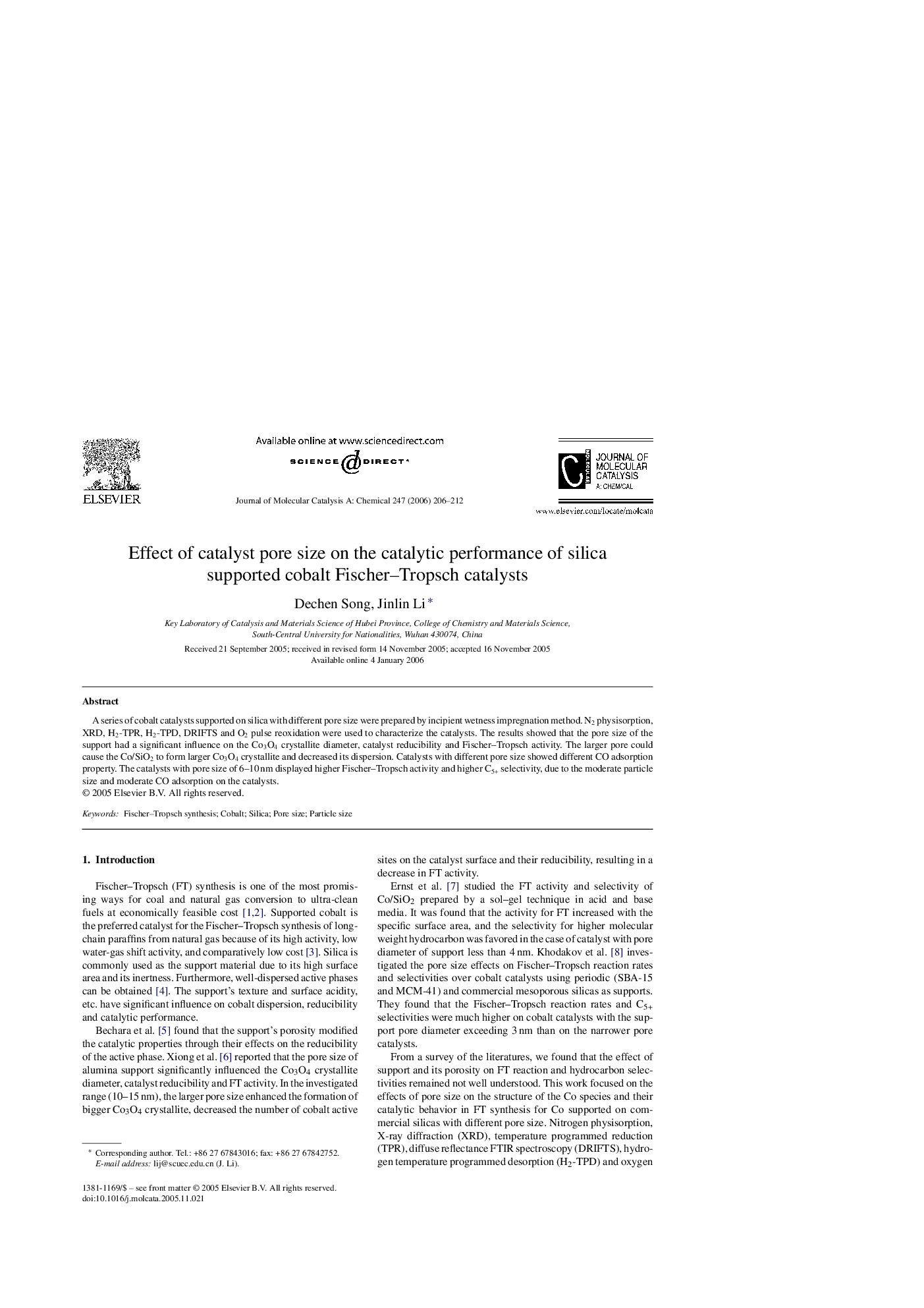| کد مقاله | کد نشریه | سال انتشار | مقاله انگلیسی | نسخه تمام متن |
|---|---|---|---|---|
| 69280 | 48535 | 2006 | 7 صفحه PDF | دانلود رایگان |

A series of cobalt catalysts supported on silica with different pore size were prepared by incipient wetness impregnation method. N2 physisorption, XRD, H2-TPR, H2-TPD, DRIFTS and O2 pulse reoxidation were used to characterize the catalysts. The results showed that the pore size of the support had a significant influence on the Co3O4 crystallite diameter, catalyst reducibility and Fischer–Tropsch activity. The larger pore could cause the Co/SiO2 to form larger Co3O4 crystallite and decreased its dispersion. Catalysts with different pore size showed different CO adsorption property. The catalysts with pore size of 6–10 nm displayed higher Fischer–Tropsch activity and higher C5+ selectivity, due to the moderate particle size and moderate CO adsorption on the catalysts.
A series of cobalt catalysts supported on silica with different pore sizes were prepared by incipient wetness impregnation method. The influence of pore diameter on the adsorption property of the Co/SiO2 catalysts was studied by diffuse reflectance FTIR spectroscopy (DRIFTS) using CO as probe molecules. Figure shows the DRIFTS profiles of the Co/SiO2 catalysts. The peaks at 2173 and 2115 cm−1 were assigned to gaseous carbon monoxide. The peak at 2030 cm−1 was assigned to CO adsorbed on cobalt particles in linear geometry, and the peak at 1935 cm−1 was due to the bridged CO adsorbed on cobalt metals. For Co/SiO2(1) the peak intensity at 2055 cm−1 was very big and almost overlapped the peak at 1938 cm−1. It could be attributed to CO linearly adsorbed on Co0 or Co+. The peak intensities of bridged CO adsorption at 1935 cm−1 on Co/SiO2(2) and Co/SiO2(3) were stronger than Co/SiO2(4) and Co/SiO2(1), indicating that there were more active sites available in Co/SiO2(2) and Co/SiO2(3). The results indicated that only cobalt supported on support with appropriate pore size could provide the appropriate particle size and the optimum number of active sites, particles that are too small or too big would be unfavorable for CO adsorption. Figure optionsDownload as PowerPoint slide
Journal: Journal of Molecular Catalysis A: Chemical - Volume 247, Issues 1–2, 16 March 2006, Pages 206–212